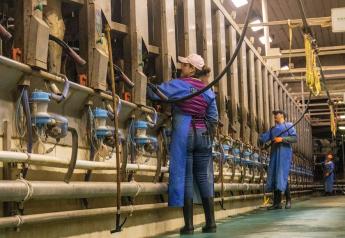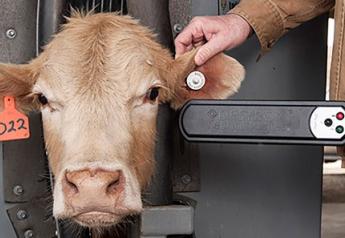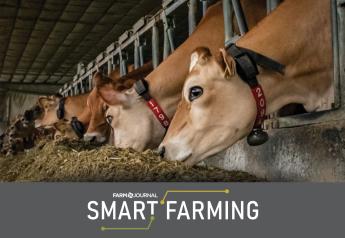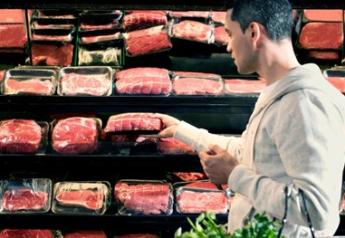Cattle producers Look to Double Crop Plantings to Increase Forage Harvest

—Frank Wardynski, Michigan State University Extension
Many beef producers across the Midwest have had difficulties harvesting high quality hay due to inclement weather. High quality forages are in short supply and difficult to purchase.
Beef producers who are short of high quality forage have an opportunity to double crop behind wheat grain harvest. There are opportunities to double crop forage plantings behind winter wheat grain harvest this summer. According to Michigan State University Extension, several options are available to plant after wheat. Oats, peas, and forage soybeans are some of the options available for late season planting.
Oats can be planted to be harvested as hay or silage. Oats can also be planted in combination with peas to produce high quality feed. Other small grains such as spring wheat, triticale and barley have also been successfully planted with peas for high quality forage production. Like many of the annual feeds, drying to make dry hay can be difficult. These crops are best suited for silage or balage production.
Another option is to plant a forage type soybean. Research utilizing soybeans as forage is very limited. Forage soybean feed analysis indicate protein and fiber values to be nearly comparable to alfalfa: protein 18-20 percent, NDF 38-46 percent, and ADF 28-34 percent. Soybean forage with these feed values was planted with an objective to harvest as high quality forage. Soybeans that are weather damaged or frozen before reaching maturity can be useful feed for beef cows but will not produce forage similar in quality to alfalfa. Soybeans should be harvested just before the R7 stage which occurs when one pod of the main stem contains mature seeds. Another concern is the limited list of pesticides approved for use on soybeans destined to be harvested for livestock feed. As with all cropping options, pesticide application must be approved to be used on crops destined for livestock feed.
Given the conditions seen across much of the Midwest, demand for high quality alfalfa is greater than current available supply. Finding methods to harvest more forage that fit into the feeding regime of a dairy farm could be the most important economic decision that producers will face this year. For more information regarding harvesting forages to increase feed supply, visit www.msue.msu.edu.







